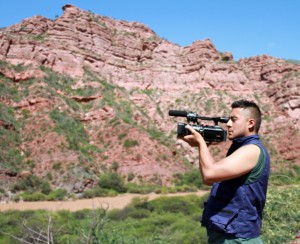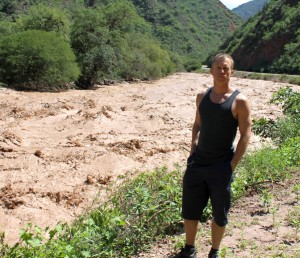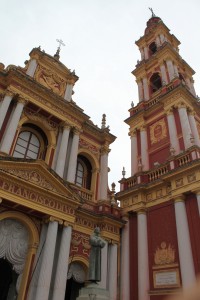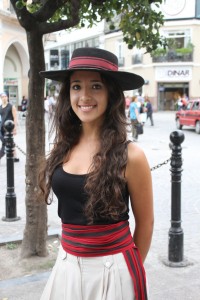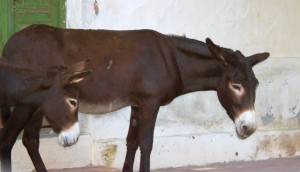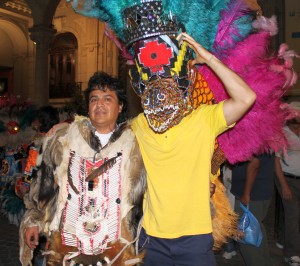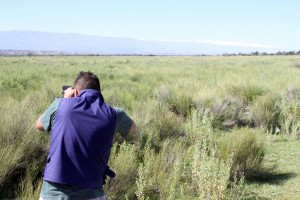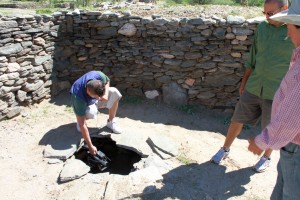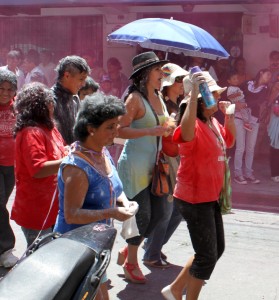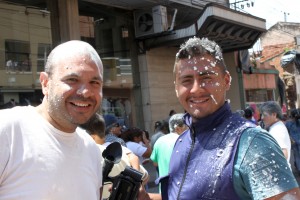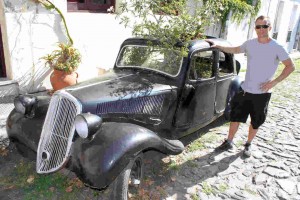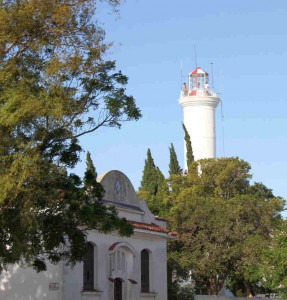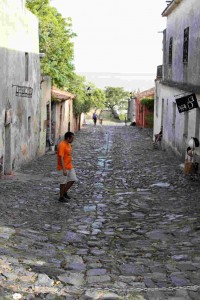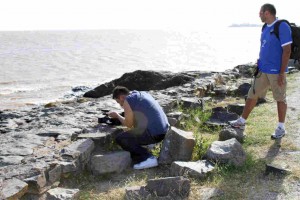
Our first day of filming in Port of Spain proper and we started the day by visiting Andres, a former cricket pro who owns the cricket store at the Queens Park Oval, one of the oldest and finest cricket clubs in the Caribbean and former home to the greatest Cricket player in the 20th century, Brian Charles Lara.
In addition to being a cricket expert Andres is also a really nice guy. He’s also very patient. He helped explain the history as well as some of the rules of cricket to me, a guy whose eyes glaze over at mere mention of baseball, the New York Yankees or “Spring Training”. Despite being a really slow game (some matches take up to 2 days!), I found many elements of cricket very fascinating.
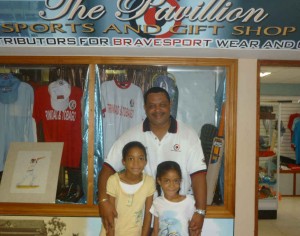
When he hooked me up with some cricket gear (about $1,000 worth) and bowled (pitched) to me, I saw first hand that the game has a real element of danger as well. The small red ball can be bowled really fast (sometimes up to 90 mph) and it is very unpredictable as not only can the bowler put some mojo on it similar to a baseball pitcher, it also usually bounces before you get to swing and can bound off in any direction.
Anyway I got a chance to try my skills at the game and combined my knowledge of golf (nil) with baseball (close to nil) but after about 4 or 5 slow pitches I finally made contact with the ball and felt pretty good about things.
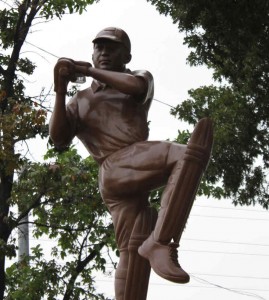
After Cricket, the crew and I tried one of the ubiquitous Chinese restaurants. Chinese food is very popular in T&T and Asians are a considerable cultural influence on the island, many having migrated there as the East Indians, as indentured servants.
The Chinese food in Trinidad seemed so much healthier and less greasy than the Chinese fare we are so used to in NYC.
After lunch we headed over to “African Trophies” and incredible store on the main thoroughfare in the Woodbrook section of POS. The store’s owner is Mr. Fitzgerald Francis, an Ex United Nations executive and also a really nice guy. Are you sensing a theme here?
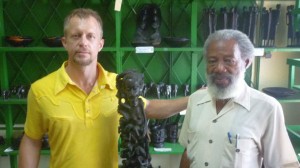
Fitzgerald is trying to help reinstate African history to the island after decades of attempts by the ruling classes to separate African slaves and their descendants from their ancestral heritage.
Fitzgerald graciously filled us in on the significant African history and contribution to present day Trinidad & Tobago (T&T) then he toured us around his store which is nothing short of amazing.
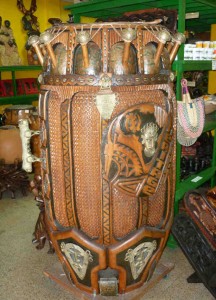
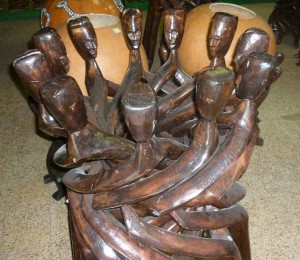
There are 4 floors of incredibly, beautiful, authentic handicrafts direct from almost every country in central and southern Africa. From huge, incredibly detailed woodcraft African drums that go for $25K U.S. to smaller handcrafts around $20-$30 (more my speed) to complete furniture sets, clothing, books, DVDs, visiting Mr. Francis’ store is like visiting the continent itself.
They even have a small display of real ivory that Mr. Francis acquired by special permission in order to showcase to people and hopefully educate them about the dangers of poaching elephants for their ivory.
I’ve always wanted to visit Africa and now I’m afraid it’s a permanent condition. If you are ever in Port of Spain and have 2-3 hours to kill, African Trophies is the spot.

Next up was a brief meeting and interview at the National Carnival Bands Association of Trinidad and Tobago, the people who help organize the massive Carnival celebration. Mr. David Cameron was extremely helpful in getting us access to video footage from past carnival celebrations and perhaps most importantly we were able to dig into the deeper, more historical meaning of carnival in Trinidad which is one of the most famous Carnival celebrations in the world.
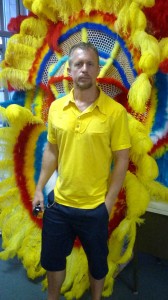
It started to rain (hey, I thought this was the dry season!) so we took some time off and had a quick dinner of jerk chicken before heading just down the street to the famous “Invaders” steel pan orchestra practice.
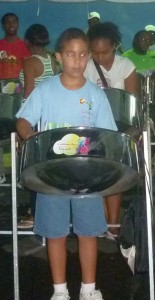
I had stumbled upon the Invader’s practice a few days ago while hunting dinner and I just followed my ears to their rehearsal space, a big lot in front of the Queens Oval Cricket stadium. One thing I love about Port of Spain is the fact that you will hear live Calypso music wafting through the streets on almost any given evening. It’s a huge part of the culture here and not just a style of music you hear during Carnival time.
The Invaders are the oldest steel pan band in the world (having formed in the 1940 as “The Oval Boys” shortly after the steel pan was invented) and they tour all over the world. Indeed, ironically enough some of them were in my home state of Tennessee, touring Dollywood when we shot.
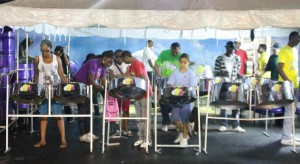
After hearing them play I can understand why. Jason is the leader and he ran them through a couple of songs for us including an original tune they had composed that had won them a high standing in the latest Panorama competition, an event that brings together the best Steel Pan in Trinidad (and thus the world).
The Invaders, like most steel pan orchestras, has a diverse mix of male and female, young and old playing together. One impressive young player, Luke Walker, was just 10 years old and had been playing since the age of 3. He was a true pleasure to watch.
After playing a few very simple tunes on one of the drums myself, it was now past 10PM and we headed back to the hotel to try to get at least 6 hours of sleep before we do the dreaded “car rental” and I drive on the left side of the road for the first time. Should be interesting. Stay tuned to see if I survive!



